It was a balmy evening in Acapulco, and up and down the town's main drag, the college party crowd was again on its nightly pub crawl, belting out one too many Jimmy Buffett tunes and guzzling a few too many Coronas. Nearby, the famous La Quebrada cliff divers had finished the evening's last show, sending moms and dads to Planet Hollywood to keep their antsy kids distracted, as two hulking cruise ships sat towering on the waterfront.
But on the other side of Acapulco Bay, perched high above the tourism mayhem, a stark wood-and-glass pavilion offered an escape hatch from the city's cliches. Inside, a sparkling white restaurant opened up like a giant flashbulb onto the glittering coastline beyond, with house music throbbing to the clinking of wineglasses and the clattering of stilettos on polished concrete floors. A crowd of young Mexicans in open-collar Gucci shirts and fluttering dresses circulated about, perhaps hoping to catch a glimpse of the actress Tara Reid, the singer Luis Miguel and the other boldfaced names who had been spotted there recently.
"It's fantastic, no?" said Angelo Pavia, the owner of the restaurant Becco al Mare, marveling at his own creation as he swooped his hand across the soaring space for emphasis. "I would never think to make this restaurant like this. But my son and daughter? Yes."
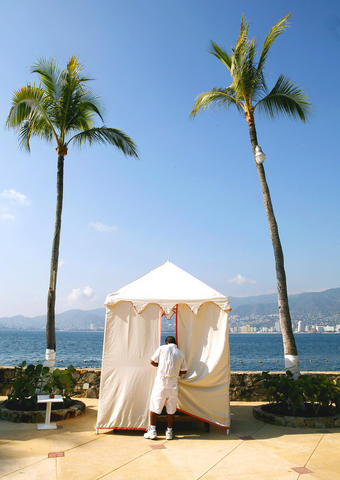
PHOTOS : NY TIMES NEWS SERVICE
Jarring words, given that Acapulco has long seemed like a place only your parents could love. For many, this resort city of more than 700,000 people on Mexico's southern Pacific coast is synonymous not with upscale chic, but with tourist hell: cruise ships unloading high-decibel families, spring breakers sloshing through drinks-to-go. Even the word itself, "Acapulco," can sound a bit over-giddy, a name forever resonating in the shrieks of hyperventilating housewives winning vacation packages on The Price Is Right.
But Acapulco is having its second act, reappearing from the fanny pack-strewn beaches to recapture its faded Hollywood glory. Between the new luxury condominiums rising in Diamond Point and the vintage modernist villas in Las Brisas, a necklace of sleek new restaurants, fashionable nightclubs and designer hotels is drawing the glitterati back to the city's azure shores. Even legendary resorts are getting a makeover, like old movie stars staging a comeback.
One thing that remains unchanged, however, is Acapulco's natural beauty. Hugging the calm, crystal-blue waters of Acapulco Bay, the city cascades from the Sierra Madre, forming a yawning, near-perfect crescent ringed by rocky cliffs, palm-feathered slopes and stretches of powdery golden sand. And it was this striking topography, along with the dependably flawless weather, that once made Acapulco an unrivaled playground for the 20th-century beau monde.
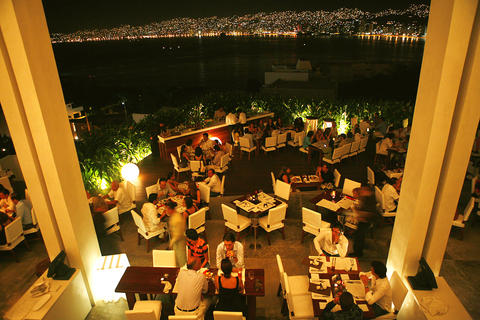
PHOTOS : NY TIMES NEWS SERVICE
At its peak, Acapulco was a haunt of Frank Sinatra and the Rat Pack, where Elizabeth Taylor married Mike Todd (the third of her eight weddings) and John and Jacqueline Kennedy headed for their honeymoon (as did a young Bill and Hillary Clinton). Howard Hughes spent his last days at the Acapulco Princess hotel. Lana Turner had a place overlooking the water, as did John Wayne. And well before the crew of Girls Gone Wild came trolling the beaches for spring-break shenanigans, Fun in Acapulco was not just a 1963 film starring a dashing Elvis Presley but an international shorthand for glamor.
But like a beachside Sodom and Gomorrah, the party was destined to end. A tidal wave of mass tourism, combined with poor planning and unchecked development, saw Acapulco's majestic beaches marred by a jungle of concrete hotels. Crime and drugs followed. Meanwhile, Mexico's original resort town was eclipsed by Puerto Vallarta, Cancun, Los Cabos and other places as the new jet-set destinations. The Pearl of the Pacific had become a polluted eyesore.
Well, half an eyesore anyway. Most of the giant hotels, tourist traps and chain restaurants are clustered along Avenida Costera Miguel Aleman, the city's main thoroughfare, as it loops around Acapulco Bay. Even today, amid the Day-Glo bikinis and two-for-one drinks being hawked, one only has to cross the street to get from Wal-Mart to Hooters. But head south from the Zocalo, or old city, past the wall of high-rise hotels, and the new Acapulco emerges like a Miracle Mile of new celebrity-driven restaurants and bottle-service nightclubs.
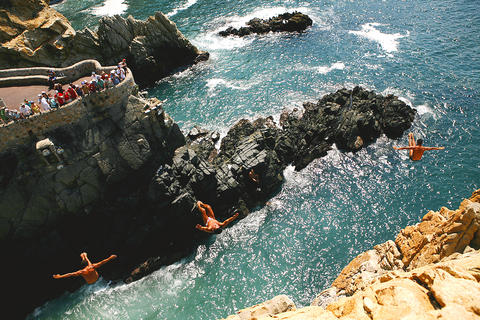
PHOTOS : NY TIMES NEWS SERVICE
You'll find them winding along the Carretera Escenica coastal highway, as it stretches from the posh Las Brisas neighborhood, which crawls up the lush mountainside at the bay's southern tip, toward the more secluded Puerto Marques Bay and the new Miami-style condominium towers of Diamond Point. Fueled by the Autopista del Sol superhighway, which has cut the drive from Mexico City to about three and a half hours, a steady stream of affluent weekenders is now flocking to the latest pleasure palaces of this rediscovered beach resort.
Like a castle on a hill, each boasts of the best view of the city - and all are often right.
There are restaurants like Becco and Kookaburra, where a resident kookaburra bird looks down its nose at the tourist pandemonium below. Other newcomers include Zuntra, with its sleek rooftop bar soaring high above the bay's arcing splendor, and Zibu, which serves a fusion of Mexican and Thai fare beneath a palapa, or thatched roof pavilion, so hyperbolically dramatic that even Philippe Starck would blush.
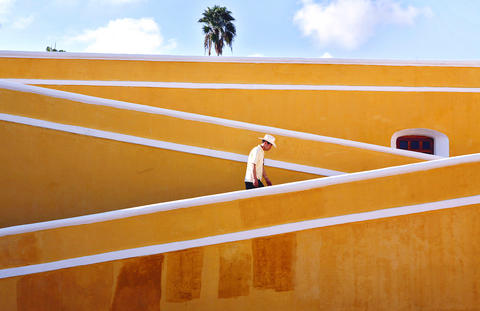
PHOTOS : NY TIMES NEWS SERVICE
But the extreme makeover award must go to Madeiras, an Acapulco institution where everyone from Sinatra to Shirley Bassey once dined. Looking a bit dated after 30 years, it underwent a chic contemporary overhaul in December and reopened with dramatic mood lighting, chiseled stone walls and modern Mexican-Asian dishes like achiote-hoisin short ribs. The restaurant is now owned by the chef Richard Sandoval, who inherited Madeiras from his father, and his business partner, the opera legend Placido Domingo.
But don't roll into Acapulco expecting to fill your autograph book. The A-list insists that no one goes out anymore - and they definitely don't do the beach - preferring instead to party-hop from villa to villa, or lounge on private yachts and pools. And hotel bars? Why bother, when you can have your own mountainside villa for US$10,000 a day? Indeed, among Acapulco's elite, hotels are considered passe. But that may be set to change.
After years of stagnation, Acapulco is getting some flashy new accommodations. Grupo Habita, the trend-setting Mexican hotelier, is building a 54-room boutique property on Punta Bruja, which juts out from the southern point of Acapulco Bay. Scheduled to open later this year, it is like a jaw-dropping modernist puzzle, its jagged concrete profile cutting like a knife across the sky.
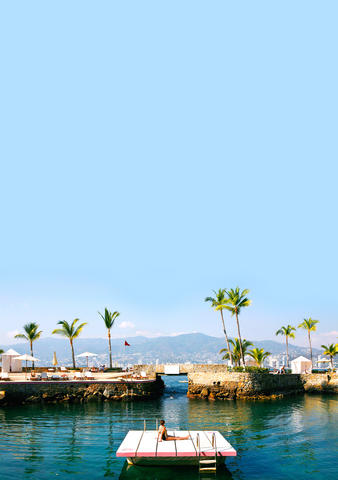
PHOTOS : NY TIMES NEWS SERVICE
Other venerable hotels have been spiffed up. The Fairmont Pierre Marques, built by John Paul Getty at Diamond Point, has recently renovated bungalows and palm-shaded restaurants that serve foie gras. And at the legendary Las Brisas hotel, the pink-and-white Jeeps that once shuttled the Kennedys up its steep, hibiscus-carpeted slopes now ferry honeymooners, recovering power couples and celebrities like Enrique Iglesias and Sandra Bullock to their pink-and-white casitas - all 251 of which have been newly made over, with a freshened-up spa on the way.
But if Acapulco's revamped hotels haven't given the glitterati an excuse to go out, the city's reinvigorated night life has - and often until dawn. Forget your sunglasses? Club workers are known to pass them out at daybreak at Classico del Mar, a new nightclub that stands like a fortress above the Carretera Escenica. At 1am on a recent Wednesday, a young and sexy crowd was dancing to Latin hits on the rooftop floor, their spaghetti-strap dresses and slim-fitting T-shirts writhing against a backlit wall of water.
Over at the megaclub Palladium, the techno music, smoke machines and other special effects drew scattered Americans and Europeans among a more international crowd. Overlooking the city's sparkling waterfront, the club's enormous glass wall lit up in a kaleidoscope of reflected flashes at around 3:30am as a man dressed as an Aztec warrior took to the stage, beaming lasers from his costume into the smoke-filled expanse. The crowd went wild, jumping on banquettes and pumping their fists into the air.
But in true Acapulco style, the most exclusive club is also the longest-running. Baby'O erected its first velvet rope more than 30 years ago, and at 2am on a recent Monday, the well-heeled and well-primped were still arriving, ready to sweet-talk their way past the hard-to-please bouncers.
Inside, the club looked like the set of Barbarella, a primitive-futurist cavern of artificial vegetation and faux-rock walls, all swirling beneath a field of undulating video screens. Men in tailored shirts and women in swishy camisoles gyrated on the sweaty dance floor, marking the spot where Madonna, Naomi Campbell and Bono were recently sighted.
"Acapulco is magical," said Joe Nizri, a strikingly handsome 21-year-old from Mexico City, as he worked his way toward the dance floor. He had been at Baby'O until 7am the previous night and was back for more. Never mind that his parents used to go there, too. (In fact, they still do.)

In the March 9 edition of the Taipei Times a piece by Ninon Godefroy ran with the headine “The quiet, gentle rhythm of Taiwan.” It started with the line “Taiwan is a small, humble place. There is no Eiffel Tower, no pyramids — no singular attraction that draws the world’s attention.” I laughed out loud at that. This was out of no disrespect for the author or the piece, which made some interesting analogies and good points about how both Din Tai Fung’s and Taiwan Semiconductor Manufacturing Co’s (TSMC, 台積電) meticulous attention to detail and quality are not quite up to

April 21 to April 27 Hsieh Er’s (謝娥) political fortunes were rising fast after she got out of jail and joined the Chinese Nationalist Party (KMT) in December 1945. Not only did she hold key positions in various committees, she was elected the only woman on the Taipei City Council and headed to Nanjing in 1946 as the sole Taiwanese female representative to the National Constituent Assembly. With the support of first lady Soong May-ling (宋美齡), she started the Taipei Women’s Association and Taiwan Provincial Women’s Association, where she

It is one of the more remarkable facts of Taiwan history that it was never occupied or claimed by any of the numerous kingdoms of southern China — Han or otherwise — that lay just across the water from it. None of their brilliant ministers ever discovered that Taiwan was a “core interest” of the state whose annexation was “inevitable.” As Paul Kua notes in an excellent monograph laying out how the Portuguese gave Taiwan the name “Formosa,” the first Europeans to express an interest in occupying Taiwan were the Spanish. Tonio Andrade in his seminal work, How Taiwan Became Chinese,

Mongolian influencer Anudari Daarya looks effortlessly glamorous and carefree in her social media posts — but the classically trained pianist’s road to acceptance as a transgender artist has been anything but easy. She is one of a growing number of Mongolian LGBTQ youth challenging stereotypes and fighting for acceptance through media representation in the socially conservative country. LGBTQ Mongolians often hide their identities from their employers and colleagues for fear of discrimination, with a survey by the non-profit LGBT Centre Mongolia showing that only 20 percent of people felt comfortable coming out at work. Daarya, 25, said she has faced discrimination since she